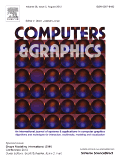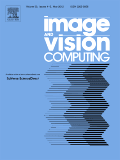
VISUAL COMPUTER
Scope & Guideline
Bridging Disciplines in Visual Computing Excellence
Introduction
Aims and Scopes
- Computer Vision Techniques:
Research in this area includes algorithms and models for object detection, recognition, and tracking, as well as advancements in scene understanding and image segmentation. - Image Processing and Enhancement:
This scope focuses on methodologies for improving image quality, such as deblurring, denoising, and super-resolution, often employing deep learning techniques. - 3D Reconstruction and Modeling:
Papers in this area explore methods for creating 3D models from 2D images, including depth estimation, point cloud processing, and 3D shape recognition. - Generative Models and AI in Visual Computing:
This includes the use of generative adversarial networks (GANs) and other AI techniques for tasks like image synthesis, style transfer, and virtual try-ons. - Remote Sensing and Medical Imaging:
Research encompasses the application of visual computing in fields like remote sensing for environmental monitoring and medical imaging for diagnosis and analysis. - Multimodal Learning and Fusion:
This area examines the integration of different data modalities (e.g., RGB and depth data) to improve the robustness and accuracy of visual recognition tasks.
Trending and Emerging
- Deep Learning for Visual Computing:
There is a significant increase in research utilizing deep learning methodologies for tasks such as image classification, segmentation, and enhancement, demonstrating the technology's effectiveness and versatility. - Generative Models and Synthesis:
The use of generative adversarial networks (GANs) and other generative models is on the rise, particularly for applications in image synthesis, style transfer, and content creation. - Multimodal and Cross-Modal Learning:
Research is increasingly focusing on integrating information from multiple sources or modalities, such as combining RGB images with depth data or incorporating text and audio for enhanced understanding. - Real-Time Processing and Applications:
There is a growing emphasis on developing algorithms that can operate in real-time for applications in augmented reality, virtual reality, and interactive systems. - Medical and Healthcare Applications:
The application of visual computing techniques in medical imaging and healthcare diagnostics is emerging as a significant area of research, particularly with the rise of AI in clinical settings.
Declining or Waning
- Traditional Computer Graphics Techniques:
There has been a noticeable decrease in publications focused on classical rendering methods and basic graphical techniques, as newer, more complex methods such as AI-driven graphics have gained traction. - Basic Image Filtering and Enhancement Techniques:
Techniques that rely solely on traditional filtering methods without integrating deep learning have seen reduced interest, as more sophisticated approaches are preferred. - Static Image Analysis:
Research focused on static images without temporal components has diminished, as there is a growing emphasis on dynamic and interactive visual content. - Simple Object Tracking Methods:
Traditional object tracking methods that do not leverage modern machine learning techniques are becoming less common, as researchers prefer more robust and adaptive solutions. - Low-Level Image Processing:
There is less focus on low-level processing tasks, such as basic edge detection and histogram equalization, as the field moves towards higher-level semantic understanding.
Similar Journals

CAAI Transactions on Intelligence Technology
Transforming Ideas into Intelligent SolutionsCAAI Transactions on Intelligence Technology is a premier peer-reviewed journal published by WILEY, dedicated to advancing the fields of Artificial Intelligence, Computer Networks and Communications, Computer Vision and Pattern Recognition, Human-Computer Interaction, and Information Systems. Since its inception in 2017, this Open Access journal has rapidly ascended the ranks, achieving Q1 quartile status across multiple categories as of 2023, and is recognized for its rigorous standards and innovative research dissemination, evidenced by impressive Scopus rankings, including Rank #12 in Computer Vision and Pattern Recognition. Through its commitment to providing a platform for high-quality research, the journal invites contributions from scholars globally, fostering a collaborative environment that stimulates intellectual exchange and encourages advancements in intelligent technology. Addressed to researchers, professionals, and students alike, CAAI Transactions on Intelligence Technology serves as a vital resource for those aiming to stay at the forefront of technological innovation.

COMPUTERS & GRAPHICS-UK
Innovating the Intersection of Technology and ArtCOMPUTERS & GRAPHICS-UK is a premier journal dedicated to the fields of computer graphics, computer-aided design, and human-computer interaction. Published by Pergamon-Elsevier Science Ltd, this esteemed journal has been a critical resource for researchers and professionals since its inception in 1975. With an impressive impact factor and ranked in the second quartile for key disciplines such as Computer Vision and Pattern Recognition, and Engineering (Miscellaneous), it provides a platform for high-quality, peer-reviewed research spanning theoretical advancements, innovative technologies, and practical applications. Notable for its interdisciplinary approach, the journal also embraces contributions that bridge diverse areas within computer science. Although lacking Open Access options, readers can benefit from its rich archive and cross-disciplinary insights, making it essential for anyone looking to advance their knowledge and practice in computer graphics and related fields. The journal is located in the United Kingdom, at The Boulevard, Langford Lane, Kidlington, Oxford OX5 1GB, and continues to be a cornerstone for scholarly exchange and advancement in the digital visualization domain.

JOURNAL OF MATHEMATICAL IMAGING AND VISION
Empowering the Future of Imaging with Mathematical RigorJOURNAL OF MATHEMATICAL IMAGING AND VISION, published by Springer, stands as a significant platform for advancing the fields of applied mathematics, computer vision, and pattern recognition, among others. With an ISSN of 0924-9907 and an E-ISSN of 1573-7683, this esteemed journal is based in the Netherlands and has been contributing to the scholarly discourse since its inception in 1992, with a converged focus through 2024. It has achieved reputable standings within several quartiles, including Q2 rankings across applied mathematics, geometry and topology, and condensed matter physics, reflecting its impact and relevance. Notably, the journal ranks within the top 5% in Geometry and Topology and maintains robust standings in Statistics and Probability. The JOURNAL OF MATHEMATICAL IMAGING AND VISION is dedicated to publishing high-quality research that bridges theoretical perspectives with practical applications, making it an essential resource for researchers, professionals, and students who are exploring the cutting-edge of mathematical imaging and its interdisciplinary applications.

Computational Visual Media
Advancing innovation in visual computation.Computational Visual Media, published by TSINGHUA UNIVERSITY PRESS, is a premier open access journal dedicated to advancing the fields of Artificial Intelligence, Computer Graphics and Computer-Aided Design, and Computer Vision and Pattern Recognition. Since its inception in 2015, it has established a robust position within the academic community, consistently achieving Q1 rankings across its categories as of 2023. With exceptional Scopus rankings, including a remarkable percentile standing in the top 10% globally, the journal serves as a vital resource for researchers, professionals, and students eager to explore cutting-edge methodologies and technologies in computational visual media. The journal’s open access format enhances accessibility, fostering global collaboration and dissemination of knowledge, making it an indispensable platform for those at the forefront of innovation in these dynamic fields. The journal is headquartered in Beijing, China, and aims to publish high-quality research that not only contributes to theoretical advancements but also addresses practical challenges within computational visual technologies.

IMAGE AND VISION COMPUTING
Exploring the frontiers of image and vision science.Image and Vision Computing, published by Elsevier, serves as a leading international journal focused on the dynamic fields of computer vision, pattern recognition, and signal processing. With its esteemed Q1 category rankings in these areas and an impressive standing in Scopus metrics, where it ranks 19th in Computer Vision and 23rd in Signal Processing, this journal has firmly positioned itself at the forefront of academic research and innovation. Established in 1983, it continues to publish cutting-edge research that drives advancements in technology and applications across various domains. The journal is committed to disseminating high-quality, peer-reviewed articles that address significant challenges and propose novel solutions, making it an essential resource for researchers, practitioners, and students alike. While not an open access journal, Image and Vision Computing offers a wealth of valuable insights into the ever-evolving landscape of visual computing technologies.

MACHINE VISION AND APPLICATIONS
Elevating the Standards of Vision-Based Research.MACHINE VISION AND APPLICATIONS is a distinguished peer-reviewed journal published by SPRINGER, serving as a vital platform for innovative research in the fields of computer vision, pattern recognition, and their applications within hardware and software systems. Since its inception in 1988, the journal has been at the forefront of disseminating cutting-edge findings and advances in machine vision technologies, significantly contributing to the global academic discourse. With an impressive track record, the journal ranks in the Q2 category across various domains in the 2023 Scopus rankings, reflecting its esteemed position in Computer Science Applications, Computer Vision and Pattern Recognition, Hardware and Architecture, and Software. Although it does not currently offer open access options, MACHINE VISION AND APPLICATIONS remains a critical resource for researchers, professionals, and students eager to explore emerging trends and methodologies in the rapidly evolving landscape of machine vision.

MULTIMEDIA SYSTEMS
Unveiling Cutting-Edge Developments in Multimedia TechnologyMULTIMEDIA SYSTEMS, published by SPRINGER, is a premier academic journal dedicated to the dynamic field of multimedia technology and its applications across various domains. With the ISSN 0942-4962 and E-ISSN 1432-1882, this journal has established itself as an essential resource since its inception in 1993, providing researchers and professionals with rigorous peer-reviewed articles that explore innovative developments in Media Technology, Computer Networks, Hardware Architecture, Information Systems, and Software. As a testament to its academic impact, MULTIMEDIA SYSTEMS has attained a Q2 ranking in multiple key categories for 2023, alongside a notable Q1 ranking in Media Technology, highlighting its significance within the community. With a rich repository of knowledge and ongoing commitment to advancing multimedia research, this journal is an invaluable asset for those seeking to stay informed about cutting-edge technologies and methodologies. While the journal follows a traditional subscription model and is not presently open access, it ensures high-quality content that serves the scholarly needs of its audience, facilitated by its accessibility from Germany's respected academic infrastructures. For inquiries and submissions, the journal is based in New York, NY, further illustrating its global academic reach.

JOURNAL OF THE OPTICAL SOCIETY OF AMERICA A-OPTICS IMAGE SCIENCE AND VISION
Illuminating the Frontiers of Optical ScienceJOURNAL OF THE OPTICAL SOCIETY OF AMERICA A-OPTICS IMAGE SCIENCE AND VISION, published by Optica Publishing Group, is a leading journal in the fields of optics, image science, and vision. With a rich history dating back to 1979, it serves as an essential platform for disseminating cutting-edge research and developments from 1984 to 2024. The journal covers a wide array of topics, including atomic and molecular physics, electronic and optical materials, and pattern recognition in computer vision. Its prestigious categorization in the Q2 quartile for Atomic and Molecular Physics and Optics and its Q3 rankings in Computer Vision and Medical fields indicate the high-level contributions it fosters within the scientific community. Researchers will benefit from its commitment to rigorous peer review and its role in advancing knowledge at the intersection of science and application. Although it is not an open-access journal, the quality of content attainable here is invaluable for academics, industry professionals, and students eager to explore the forefront of optical science.

SIGNAL PROCESSING-IMAGE COMMUNICATION
Advancing the Frontiers of Image CommunicationSIGNAL PROCESSING-IMAGE COMMUNICATION, published by Elsevier, is a leading journal in the fields of Computer Vision, Signal Processing, and Electrical Engineering. With an impressive range of Quartile rankings in 2023, including Q1 in Electrical and Electronic Engineering and Q2 in Signal Processing, this journal is vital for researchers and professionals seeking the latest advancements and comprehensive studies in image communication technologies. Issued in the Netherlands, SIGNAL PROCESSING-IMAGE COMMUNICATION has been an essential resource since its inception in 1989, fostering innovation and collaboration among academia and industry. The journal provides a platform for high-quality peer-reviewed research, addressing significant challenges and solutions in the convergence of image processing and communication. Although currently not an Open Access journal, it offers subscription options that ensure a broad dissemination of groundbreaking knowledge. With a robust reputation reflected in its Scopus ranks, this journal serves as an indispensable reference for students and experts aiming to stay at the forefront of developments in this dynamic field.

IMAGING SCIENCE JOURNAL
Fostering Scholarly Dialogue in Imaging ResearchImaging Science Journal, published by Taylor & Francis Ltd, serves as a vital resource for researchers and professionals in the fields of computer vision, pattern recognition, and media technology. With an ISSN of 1368-2199 and an E-ISSN of 1743-131X, this journal has been fostering scholarly dialogue since its inception in 1997, with a converged content offering extending through 2024. Its categorization in Quartile 4 in Computer Vision and Pattern Recognition and Quartile 3 in Media Technology highlights its relevance and contributions to emerging trends in these domains. Although it ranks 36th in the Engineering - Media Technology category and 96th in Computer Science - Computer Vision and Pattern Recognition, its innovative research and insights continue to attract the attention of scholars dedicated to advancing knowledge at the intersection of imaging technologies. Offering versatile access options, this journal is essential for students, researchers, and professionals aiming to stay informed and engaged in the rapidly evolving landscape of imaging science.